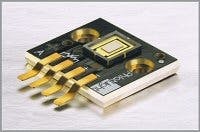Several rear-projection TVs using LED-based light sources supplied by Luminus were demonstrated at the Consumer Electronics Show (CES) in January 2006, including Samsung’s HL-S5679W 56-inch rear projection television (see CES exhibits herald the arrival of televisions based on LEDs).
Participants in the funding round include Luminus’ current investors Battery Venture Partners, Argonaut Private Equity, Stata Venture Partners, Draper Fisher Jurvetson, DFJ-New England and Eastward Capital, plus several new investors.
"We have watched Luminus perfect its technology, establish a high-volume manufacturing process and line up an impressive list of customers," said Jason Martin, managing director of Argonaut Private Equity. "It is their continued growth, focus, ability to execute and win customers that has affirmed our desire to support them as they expand into new applications."
"We are tremendously encouraged by the level of interest in our PhlatLight technology and the opportunity this investment has afforded us to meet our customers' demand," said Udi Meirav, CEO of Luminus Devices. "This puts Luminus in a superb position to begin capturing the value we have been working to create since our inception."
PhlatLight technology
Luminus Devices supplies LED chipsets comprising separately packaged red, green and blue emitters. The LEDs are based on PhlatLight (photonic lattice) technology, which incorporates a sub-micron structure on the surface of a top-emitting LED. These structures have typical dimensions in the order of λ/5, so for 400nm blue light the dimensions are in the order of 0.08 micron. The net effect of the photonic lattice structure is high brightness per unit area.
The photonic lattice has a profound effect on LED light emission, enhancing the light extraction efficiency and producing a narrower beam angle. The lattice generates a horizontal band gap that prevents the photons from traveling through the LED material parallel to the surface. The photons are confined to the vertical direction, and when reflected from a distributed Bragg reflector (DBR) under the light-emitting layer, light is directed upwards. According to Luminus, the result is that about 80% of the photons emitted by the LED exit the surface of the LED into a cone angle of ±60°.
Bob Karlicek, Luminus' chief scientist, told LEDs Magazine that the company offers a range of LED emitters, including variable die size and die count, depending on the needs of its customers. The photonic lattice technology, which is the subject of worldwide patent applications, can be used in a variety of dielectric materials in order to obtain the best possible performance. Luminus purchases LED chips externally and performs all operations related to the production of chipsets.






